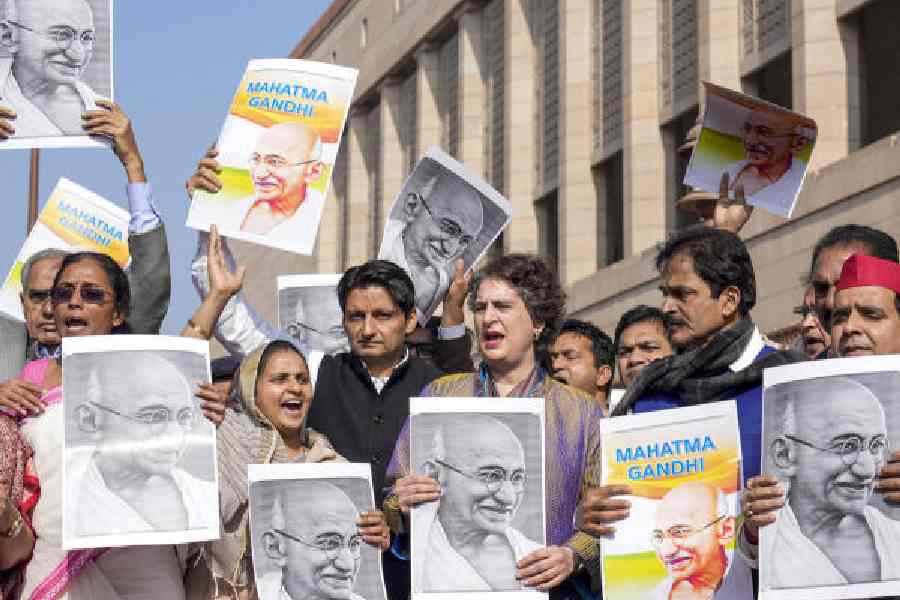Book: Tomb Of Sand
Author: Geetanjali Shree
Publisher: Penguin
Price: Rs. 699
For the first several chapters of the novel, all we see of its eighty-year-old protagonist is her back. Weary of her family and the world at large, she has decided to lie on her bed facing the cold, “yellowing, whitewashed, middle-class wall” of her son’s house, stubbornly disregarding her relatives’ attempts “to make her live”. That is, until she picks up a new cane, flips onto her back, and, holding it straight up, declares that she is the Kalpataru, or the Wishing Tree. Geetanjali Shree’s Tomb of Sand (Ret Samadhi), translated from Hindi into English by Daisy Rockwell, tells the story of Ma’s excavation of her entombed self as she forges new relationships, rejuvenates old ones, and journeys back across borders to pick up pieces of lives severed by the Partition.
Set in the house of her civil servant son, Bade, the first of the novel’s three sections welcomes readers into an intricate web of familial relations that occasionally includes friends, neighbours, and domestic workers. The narrator rarely refers to characters by their names, defining them instead through their relationships with one another. We are introduced to Bade’s wife, the Reebok-wearing Bahu, to Sid, the cheerful grandson, and to the Overseas Son, who is incapable of laughter and worries constantly for his mother’s well-being. The two most powerfully drawn characters, who come into their own as the narrative unfolds, are Ma’s daughter, Beti, who makes a living as a writer, and her friend, Rosie Bua, a hijra. Things come to a head when Ma goes missing from Bade’s house and, mysteriously, mentions another man, Anwar, when asked her husband’s name.
Shree’s storytelling performs an incredible balancing act, alternating between the cacophony of a domestic set-up caught in a moment of transition (they are shifting because of Bade’s retirement) and lyrical musings — on doors, walls, daughters, and customs — which could have seemed self-indulgent had they not been dealt with such a light and playful touch. In her critique of masculinity too, she adopts a comically dismissive tone, as if speaking with anthropological curiosity about fragile things like the male ego or rage.
Ma’s recovery takes place at Beti’s home, where she finds her feet and her sense of humour. The prose clears up all of a sudden: the babble of voices is replaced by more intimate tones of mutual care and affection between mother and daughter. For the first time, we are able to hear Ma snore as she sleeps peacefully, her hand extended to ensure that her daughter is nearby; she even moves around the apartment with the sunlight, allowing it to nourish her. Rosie gains greater significance in her day-to-day life (a change Beti resents initially, seeing it as a dilution of her own importance), as Ma also befriends Beti’s partner, KK, and the tailor, Raza Master. Their happy and motley home gradually crumbles and, after a series of tragic incidents, Ma and Beti travel to Pakistan to offer a handful of chironji seeds on Rosie’s behalf. Their troubled journey, which spans the final chapters and ends in Khyber-Pakhtunkhwa, offers clues to some unanswered questions, like the origin of the seemingly self-willed Buddha statuette and Ma’s relationship with Rosie. What does it mean for her — or indeed for the two nations — when, upon reuniting with her old lover, she mutters, “Anwar, Chanda”, invoking her own name?
At over 700 pages, Tomb of Sand is by no means a quick read but nowhere does the prose feel weighty — an impressive achievement considering it confronts headfirst questions of gender, bodies, borders, and nations, weaving together history and our troubled present. It not only self-consciously places itself in a feminist Hindi literary lineage, alongside writers like Krishna Sobti, Maitreyi Pushpa, and Sheela Rohekar, but also, in a fantastical pageant at the Wagah border, brings to life writers bound unforgettably with narratives of Partition, such as Bhisham Sahni, Intizar Hussain, Khushwant Singh, and iconic characters like Manto’s Bishan Singh and Mohan Rakesh’s Ganni. Unsurprisingly, the novel’s International Booker award — India’s first— went uncelebrated as an achievement of national significance.
While reading the novel, some of the adjectives that came to mind were ones I associate with human beings: garrulous, generous, empathetic, which is to say the narrative voice feels like a deeply embodied one that speaks through its experience of life. Rockwell’s exemplary translation successfully captures the storyteller’s shifts in tone and mood, recreating what she calls the “dhwani” of Shree’s prose, revelling in its rich plurilingualism. Indeed, their coming together seems like a happy partnership, with Rockwell too self-consciously choosing to translate women’s writing from Hindi to English, creating her own feminist lineage. Her painting of Sobti that appears on the cover of the Indian edition is a touching tribute to their ongoing dialogue. One hopes that this is a sign of good things to come for translations among Indian languages.










